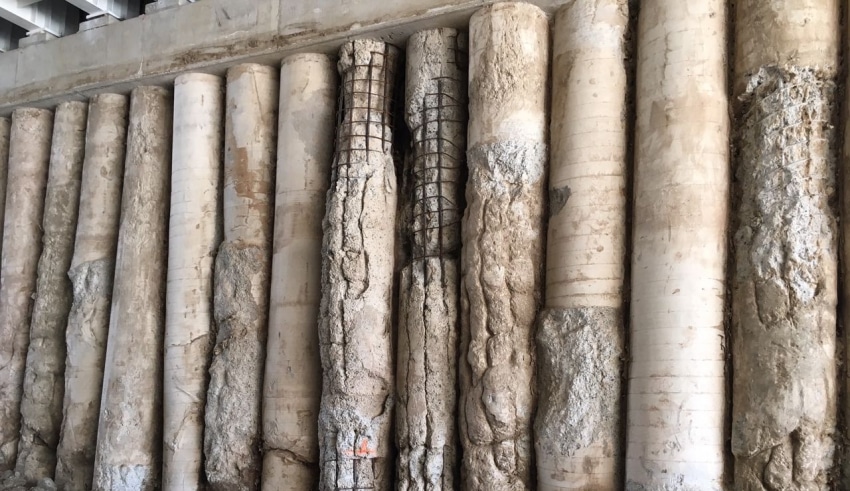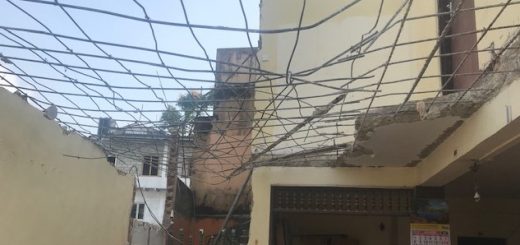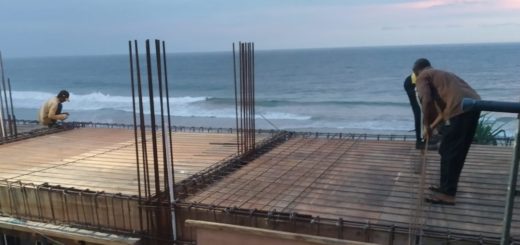Foundation Failure [ a detailed study]
Foundation failure leads to the failure of the structure built on top of it. As we always discuss, the foundation should be adequately strong enough to carry the applied loads.
However, the failure of the foundation is not only due to the failure of the foundation, it could be due to the failure of the ground or the support that foundation is rested.
Foundation failure can be discussed under different subjects. Let’s see the failure based on the foundation types.
Mainly there are two types of foundations.
- Shallow foundations
- Deep Foundations
Initially, let’s discuss the shallow foundation failures.
Shallow Foundation Failures
In this article, we are mostly concentrating on the shallow foundations such as footings and rubble foundations.
A shallow foundation could fail due to the following main reasons.
- Soil bearing failure
- Structural failure of the foundation
- Failure due to other reasons
Foundation failure due to Soil Failure
When the soil is over-stressed, it could fail. Therefore, the designer shall be aware of the failure modes of the soil under the foundation.
Even if the bearing capacity of the soil is correctly estimated, footing could fail if the applied load exceeds the capacity of the soil.
The article, shallow foundation failure discussed the failure method of the soil with the application of loads. It provides a comprehensive guide.
Structural Failure of Foundation
Foundation could fail due to the inadequacy of the structural capacity. There are different types of structural failures modes of shallow foundations.
- Punching shear failures
Failure of the foundation is due to the inadequate share resistance capacity at the critical shear perimeter.
The following figure indicates the failure due to the punching shear.
The article written as punching shear design could be referred for more information on this type of design. The article discussed in detail the design process for punching shear.
- Vertical Line Shear Failure
Failure of the foundation along the edge of the column.
This type of failure occurs when the shear resistance capacity of the footing exceeds the maximum shear capacity of the concrete.
According to the BS 8110, the vertical line shear capacity is √fcu or 4N/mm2.
No reinforcement will be provided for the vertical line shear. If it reaches the shear stress limit, the footing thickness needs to be increased.
- Bending Failure
Exceeding the bending capacity of the section leads to the bending failure of the footings or any type of shallow foundation.
Due to the increase in the applied loads, design errors, construction errors could lead to failures of this nature.
Failures Due to Other Reasons
- Desing foundation with inadequate information
It is required to be aware of the condition of the ground when the structural design is carryout.
One might do the design of the foundation based on the assumed bearing capacity by looking at the surface soil conditions.
However, as we all know, there could be weak soil layers underneath that cause settlement of the footings. Soil layers with organic material with compressibility could cause settlement when loads are applied.
In addition, the decision of the ground condition and assessment of the bearing capacity shall be done by a good experienced geotechnical engineer. Therefore, correct interpretation of the geotechnical conditions is very important.
The incorrect interpretation could lead to the failure of the foundations.
Therefore, the designer should be fully aware of the ground condition very well.
- Corrosion of Reinforcements
Reinforcement leads to corrections due to the inadequate cover to the reinforcements.
In general, the cover to the reinforcement is kept in the range of 40-100mm.
The requirement of the cover to the reinforcement is decided based on the durability requirement of the foundation. It will be decided based on the exposure conditions the foundation is exposed to.
In addition, the condition of the groundwater shall be checked to know whether there are harmful chemicals in the water. If the ions such as chloride and sulfate exist in the groundwater, we need to be very careful.
Cover to the reinforcement shall be selected by taking into account all those factors.
Even the concrete, minimum cement content is also selected based on the durability requirements as the effect to the durability of concrete.
Further, the article on how to select concrete grade could be referred for more information on the section of concrete grade in structural design.
Deep Foundation Failures
Mainly the following type of foundations is considered as deep foundations
- Cast in situ bored piles
- Precast driven piles
- Micro piles
Failure of this type of foundation could be due to many reasons. Let’s discuss the construction of cast-in-situ bored piles.
Cast in situ Bored Pile Failures / Micro Piles
Failure could be due to different reasons discussed below.
- Inadequate flushing
After the excavation or coring for the piling, it is required to clean the volume to be filled with the concrete. This is called flushing.
If the clearing is inadequate, there is a possibility of mixing concrete with the soil and collecting the soil in the socketing area. There could be a weak layer(soil) at the bottom of the pile causing the settlement when loads are applied.
- Necking
Reducing the pile diameter and unawareness about it could failure of the pile when loads are applied.
We do the pile integrity test (PIT) to check the pile. Generally, that kind of issue in the piles can be identified by this test. If someone does the test we could not identify the issue in the pile. The following types of failures could occur with the necking of piles.
- Failure due to inadequate structural capacity due to the inadequate section
- Corrosion of reinforcement if they are exposed with the necking.
- Inadequate Geotechnical Capacity
Pile designs are done by taking into account the geotechnical capacity and the structural capacity.
Generally, the geotechnical capacity is critical when compared to structural capacity.
If the assessment geotechnical capacity is not developed, the pile could fail or settle with the application of the loads. This could be due to the inadequate development of the skin friction and the end bearing.
We do the testing of plies to check whether it can mobilize the working load. Testing shall be done adequately and correctly to avoid issues of this nature.
The most common pile tests are static load tests and dynamic load tests.
The article on Retaining Wall Failures could also be referred for failures in other types of structures.
The following articles on pile foundations could be referred to for further information.





